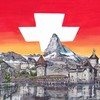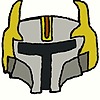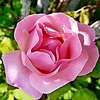HOME | DD
 LePtitSuisse1912 — Chateau de Chenaux a Estavayer-Le-Lac
LePtitSuisse1912 — Chateau de Chenaux a Estavayer-Le-Lac

#architecture #autumncolors #castle #chateau #donjon #estavayer #europa #europe #exterior #exteriorarchitecture #histoire #historical #historicalplace #history #keep #medievalarchitecture #monument #oldarchitecture #photography #schloss #schweiz #suisse #svizzera #swiss #switzerland #tower #architectureexterior #architecturephotography #medievaltower #exteriorphotography #estavayerlelac #medievalcastle #swisscastle #medieval_castle #medieval_tower #swisshistory #swisscastles #cantondefribourg #canton_de_fribourg #cantonfribourg #kantonfreiburg #kanton_freiburg #canton_fribourg #swiss_history #histoiresuisse #histoire_suisse
Published: 2019-10-07 18:14:04 +0000 UTC; Views: 1351; Favourites: 121; Downloads: 0
Redirect to original
Description
Estavayer-Le-Lac est une ville située au bord du lac de Neuchâtel chef-lieu du district de la Broye fribourgeoise. Une légende prétend qu’Estavayer aurait été fondée en 512 par un chef Germain appelé Stavius. Bien sûr ce n’est qu’une légende et rien n’est certain, même si les fouilles archéologiques sur le territoire de la commune n’ont pas été nombreuses, on peut néanmoins supposer que le site était déjà habité dès le Mésolithique soit (8000-5500 avant J.-C)
La commune d’Estavayer est composée des 13 villages et d’un hameau qui ont fusionné au cours de l’histoire : Autavaux, Bussy, Estavayer-le-Lac, Font, Forel, Franex, La Vounaise, Les Planches (hameau) Montborget, Montbrelloz, Morens, Murist, Rueyres-les-Prés et Vuissens.
3 châteaux donnèrent leur empreinte à cette agglomération médiévale, Il y eu certainement aussi un ouvrage primitif à Estavayer même, sur la partie la plus élevée de la falaise divisée par deux petits vallons qui s’appelle en effet « la motte-châtel » ce qui fait sûrement référence à un premier château construit à cet endroit. Il devait appartenir à une famille noble de Haute-Bourgogne qui fût aux services des comtes de Savoie et de l’évêché de Lausanne.
C’est probablement de la motte-châtel que la fondation de la ville a commencé avec un château et peut-être une église le tout entouré de fortifications. Durant le XIIIème siècle la ville s’agrandit et un second château fût construit sur une petite colline plus au sud.
Alors qu’il ne reste rien de ces deux châteaux, Le troisième, celui de Chenaux toujours debout aujourd’hui fût construit vers la fin du XIII siècle, il s’agit d’un quadrilatère flanqué aux angles de 3 tours rondes en encorbellements et d’un haut donjon circulaire de 33,5 mètres, avec des constructions fortes et des douves.
Après l’acquisition du château par les comtes de Savoie, ils entreprennent en 1432 la construction d’une barbacane près du donjon et vers 1450 d’une haute tour porte côté ville. En 1454 les savoyards avaient revendu la seigneurie à ses ministériaux. Dont les barrons d’Estavayer après des problèmes financier avaient fait en emprunt à l’hôpital de Fribourg et donner leur château en gage.
Par la suite Les comtes de Savoie alliés aux ducs de Bourgogne se retrouvèrent engagés dans le conflit opposant Charles le Téméraire aux confédérés Suisses de 1474-77. Les suisses progressèrent jusqu’aux lac Léman en massacrant tous ceux qui s’opposèrent à eux. La ville d’Estavayer fût prise en octobre 1475 et fût le théâtre d’un horrible massacre, la ville pillée et le château incendié. Après les guerres de Bourgogne, suite à la mise en gage du château par les barrons d’Estavayer, Fribourg ce considéra comme propriétaire de la seigneurie ou en tout cas une partie. Le château de chenaux qui fût le seul à être reconstruit ainsi que les terres qui lui était associé formèrent une enclave fribourgeoise en terres savoyardes même après le traité de paix signé en 1478. Plus tard Chenaux servit de siège aux baillis de fribourg, puis de préfecture au district de la Broye.
C’est après les travaux de reconstruction après 1476 que le château de Chenaux doit une bonne partie de son apparence actuelle. Le château fût adapté aux nouvelles techniques de défense et de fortification comme l’ajout de mâchicoulis. Le pont-levis fût remplacé par un pont en brique et bois. En 1503 on remplaça les tours en encorbellement par deux tours en briques rouges inspiré de l’architecture de l’Italie du nord dans le même style que les châteaux de Vufflens et de Sainte-Maire à Lausanne.
Sources des infos
www.swisscastles.ch/Fribourg/e…
Estavayer-Le-Lac ist eine Stadt am Neuenburgersee, der Hauptstadt des Freiburger Stadtteils Broye. Eine Legende besagt, dass Estavayer in yahrezeit 512 von einem deutschen Anführer namens Stavius gegründet wurde. Natürlich ist es nur eine Legende und nichts ist sicher, auch wenn die archäologischen Ausgrabungen auf dem Territorium der Gemeinde nicht zahlreich waren, kann man dennoch annehmen, dass der Ort bereits seit dem Mesolithikum bewohnt war ( 8000-5500 v. Chr.)
Die Stadt Estavayer besteht aus 13 Dörfern und einem Weiler, die sich im Laufe der Geschichte zusammengeschlossen haben: Autavaux, Bussy, Estavayer-le-Lac, Font, Forel, Franex, La Vounaise und Les Planches (Weiler) Montborget , Montbrelloz, Morens, Murist, Rueyres-les-Pres und Vuissens.
Drei Burgen haben dieser mittelalterlichen Stadt ihren Stempel aufgedrückt, und in Estavayer, auf dem höchsten Teil der Klippe, der durch zwei kleine Täler geteilt ist, gab es sicherlich auch ein primitives Werk, das "das Motte-Châtel" genannt wird bezieht sich sicherlich auf eine erste Burg, die an dieser Stelle erbaut wurde. Er sollte zu einer Adelsfamilie von Oberburgund gehören, die im Dienste der Grafen von Savoyen und des Bistums Lausanne stand.
Es ist wahrscheinlich das Motte-Chatel, mit dem die Gründung der Stadt mit einer Burg und vielleicht einer von Befestigungsanlagen umgebenen Kirche begann. Während des XIII Jahrhunderts wurde die Stadt erweitert und eine zweite Burg wurde auf einem kleinen Hügel weiter südlich gebaut.
Während von diesen beiden Burgen nichts mehr übrig ist, wurde die dritte, die von Chenaux, die noch heute steht, gegen Ende des 13 Jahrhunderts erbaut. Es handelt sich um ein Viereck, das an den Ecken von 3 runden Türmen und einem 33,5 Meter hohen Donjon mit Wassergräben flankiert ist.
Nach dem Erwerb des Schlosses durch die Grafen von Savoyen unternahmen sie 1432 den Bau eines Barbakans in der Nähe des Donjon und um 1450 eine hohe Turmtür Stadtseite. 1454 hatten die Savoyer die Herrschaft an seinen Ministeriellen verkauft. Die Freiherren von Estavayer hatten sich nach finanziellen Problemen aus dem Freiburger Krankenhaus ausgeliehen und ihr Schloss als Pfand gegeben.
In der Folge gerieten die mit den Herzögen von Burgund verbündeten Grafen von Savoyen in den Konflikt zwischen Karl der Kühne und den Schweizerischen Eidgenossen von 1474-77. Die Schweizer stießen an den Genfersee vor, indem sie alle, die sich dagegen aussprachen, massakrierten.Die Stadt Estavayer wurde im Oktober 1475 eingenommen und war Schauplatz eines schrecklichen Massakers. Die Stadt wurde geplündert und die Burg niedergebrannt. Nach den Kriegen von Burgund, nach der Verpfändung der Burg durch die Freiherren von Estavayer, betrachtete es Freiburg als Eigentümer der Herrschaft.
Das Schloss Chenaux, das als einziges wieder aufgebaut wurde, und die damit verbundenen Ländereien bildeten auch nach dem 1478 unterzeichneten Friedensvertrag eine Freiburger Enklave im savoyischen Raum. Später diente Chenaux als Sitz der damaligen Vögte von Freiburg und später die Präfektur im Bezirk Broye.
Nach dem Wiederaufbau nach 1476 verdankt das Schloss von Chenaux einen Großteil seines heutigen Erscheinungsbildes. Die Burg wurde an neue Verteidigungs- und Befestigungstechniken angepasst, indem Machikolationen hinzugefügt wurden.
Die Zugbrücke wurde durch eine Brücke aus Backstein und Holz ersetzt. Im Jahr 1503 wurden die alten runden Türme durch zwei rote Backsteintürme ersetzt, die von der Architektur Norditaliens im selben Stil wie die Schlösser von Vufflens und Sainte-Maire in Lausanne inspiriert waren.
Informationsquellen
www.swisscastles.ch/Fribourg/e…
Estavayer-Le-Lac is a town on the edge of Lake Neuchâtel, the capital of Friborg's Broye district. A legend claims that Estavayer was founded in 512 by a Germain chief named Stavius. Of course it's only a legend and nothing is certain, even if the archaeological excavations on the territory of the municipality weren't numerous, one can nevertheless suppose that the site was already inhabited since the Mesolithic ( So 8000-5500 BC).
The town of Estavayer is composed of 13 villages and a hamlet that have merged in the course of history: Autavaux, Bussy, Estavayer-le-Lac, Font, Forel, Franex, La Vounaise, Les Planches (hamlet) Montborget , Montbrelloz, Morens, Murist, Rueyres-les-Pres and Vuissens.
3 castles gave their imprint to this medieval agglomeration, There was certainly a primitive fortress in Estavayer, on the highest part of the cliff called indeed "the motte-châtel" which surely refers to a first castle built at this location. It was to belong to a noble family of Upper Burgundy who was at the service of the Counts of Savoy and the bishopric of Lausanne.
It's probably from the "motte-chatel" that the foundation of the city began with a castle and perhaps a church all surrounded by fortifications. During the XIII century the city expanded and a second castle was built on a small hill further south.
While there is nothing left of these two castles, the third one, that of Chenaux still standing today was built towards the end of the XIII century, it's about a quadrilateral flanked by 3 round Corbelled towers and a high circular keep of 33.5 meters with moats.
After the acquisition of the castle by the counts of Savoy, they undertook in 1432 the construction of a barbican near keep and around 1450 of a high door tower on city side. In 1454 the Savoyards had sold the lordship to their ministeriales. The barons of Estavayer after financial problems had borrowed from the hospital of Friborg and give their castle as pledge.
Subsequently The Counts of Savoy, allied with the Dukes of Burgundy, became involved in the conflict between Charles the Bold and the Swiss Confederates in 1474-77. The Swiss progressed to Lake Geneva by massacring all those who opposed them. The city of Estavayer was taken in October 1475 and was the scene of a horrible massacre, the city looted and the castle burned. After the wars of Burgundy, following the pledge of the castle by the barons of Estavayer, Friborg considered it as owner of the lordship or at least a part. The castle of Chenaux which was the only one to be rebuilt as well as the lands which it was associated formed a Friborg enclave in Savoyard lands even after the treaty of peace signed in 1478. Later the Castle of Chenaux served as a seat for the bailiffs of Friborg, and later as the prefecture of the Broye district.
It was after the reconstruction work after 1476 that the castle of Chenaux owes much of its present appearance.
The castle was adapted to new techniques of defense and fortifications like the addition of machicolations. The drawbridge was replaced by a bridge made of brick and wood. In 1503 the corbelled towers were replaced by two red brick towers inspired by the architecture from the northern Italy in the same style as the castles of Vufflens and Sainte-Maire in Lausanne.
Source of information
www.swisscastles.ch/Fribourg/e…
Related content
Comments: 13

👍: 0 ⏩: 1

👍: 0 ⏩: 0

thank you very much
👍: 0 ⏩: 1

thank you so much
👍: 0 ⏩: 1

Oui en effet 
👍: 0 ⏩: 0






















